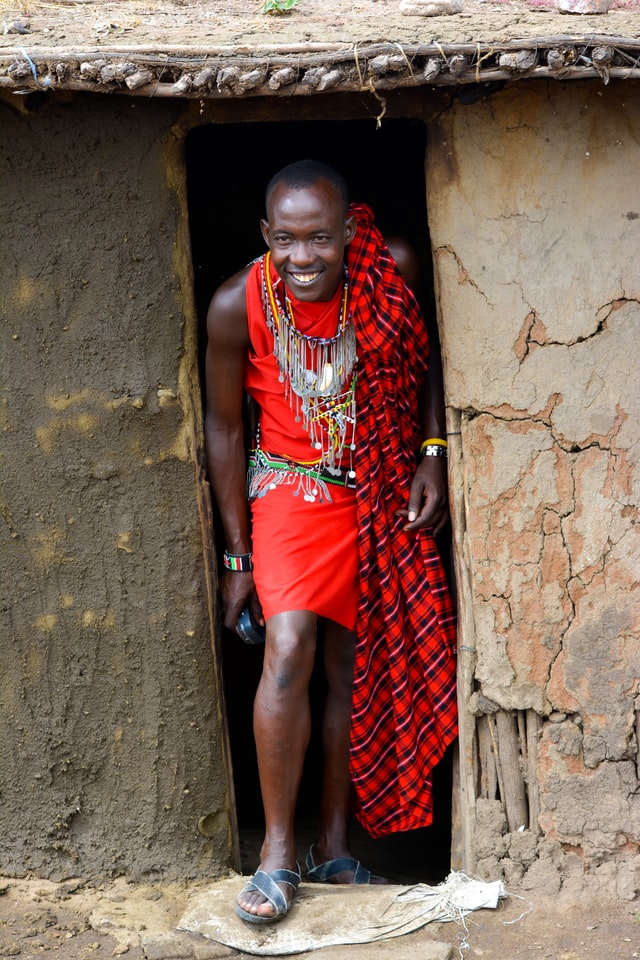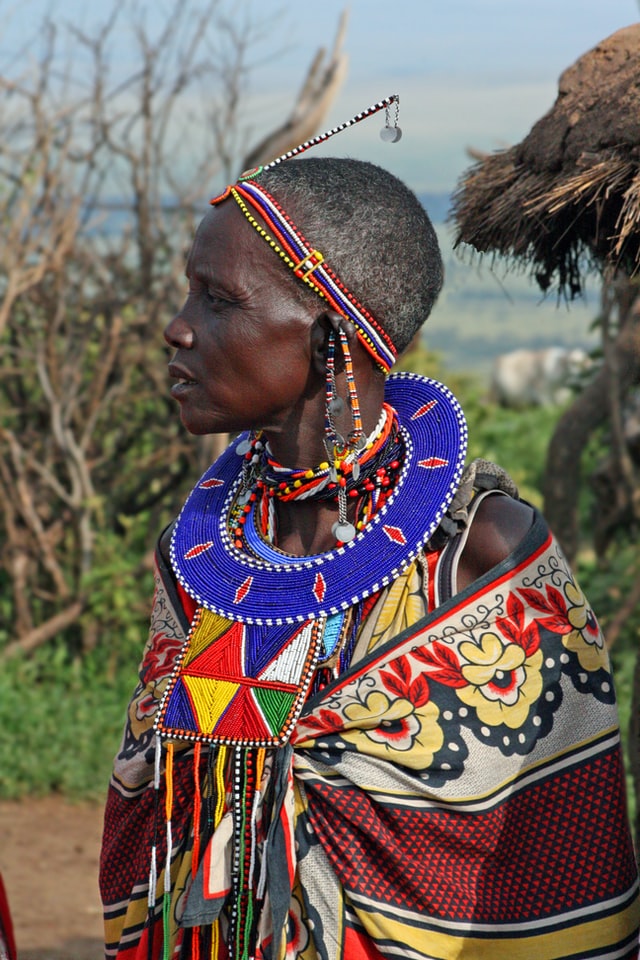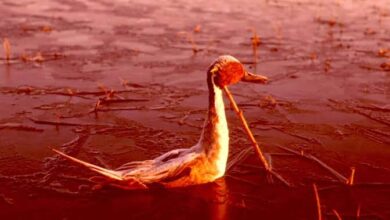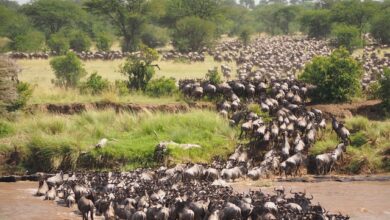The Maasai Tribe Facts: Blood Drinking, Lion Hunting All about The Maasai Tribe in Kenya

Africa facts zone presents The maasai tribe facts; The Maasai tribe are a native ethnic clan in Africa of semi-migrant people that settled in Kenya and northern Tanzania.
Because of their unmistakable practices, customs and dress and their home close to the numerous public game parks of East Africa.
The Maasai are among the principal African ethnic groups and are known globally as a result of their connections to the public parks and reserves.

The Maasai Tribe Facts
LANGUAGE
One of the maasai tribe facts is that they communicate in the Maa language, which is of Nilo-Saharan (as opposed to the Bantu beginning dialects of most other ethnic groups in East Africa).
The term Maasai alludes to “one who communicates in the Maa language.”
Maa is principally a spoken language, and is accordingly helpless against extinction.
Be that as it may, there is a Maasai dictionary, and the Bible has been converted into Maasai.
Numerous Maasai additionally communicate in official dialects of Tanzania and Kenya: Swahili and English.
HOMES
Another highlight of the maasai tribe facts is that Maasai women are the ones who construct the Maasai hut (Inkajijik in the Maa language).
They use cow waste blended in with mud for the dividers organized with sticks, and afterward grass and more sticks for the rooftop.
The hovels are typically roundabout, tiny and low, with generally only a couple of rooms.
CLOSET

The Maasai are known for their actual magnificence their flexible, effortless physical make-ups however for their extraordinary attire and body ornamentation.
The maasai tribe facts most notable clothing today is the shuka-a woven, thick cotton cover, normally red with a striped or checked design in blue or dark, which is worn folded over the body.
However it isn’t customary from an authentic perspective the shuka only replaced animal-skin clothing around 1960s, and is bought instead of made by tribespeople-it is presently worn by for all intents and purposes all Maasai across East Africa.
The signature clothing has been generally imitated by present day style creators, including Louis Vuitton.
THE MAASAI CALENDAR
The customary Maasai calendar doesn’t have a widespread norm.
It is isolated into a year like the calendar utilized all over the planet, however rather than four seasons, there are just three:
Nkokua (the long rains), Oloirurujuruj (the drizzly season), and Oltumuret (the short rains).
The names of the months are extremely descriptive.
For instance, the second month of the drizzly season is Kujorok, signifying “The entire countryside is delightfully green, and the field lands are compared to a bushy caterpillar.”
There are no characterized occasions on the Maasai calendar, however Maasai formal banquets for circumcision and marriage offer events for merry community celebrations, which might be viewed as holidays.
Maasai likewise take an interest in nonreligious state occasions like Labor Day (May 1) in Tanzania and Kenya, among others.
RICHES
Other interesting thing about the maasai tribe facts is that the Maasai depend intensely on cows and their products like (milk, meat, cheese, and blood).
Cowhide for apparel and sleeping cushions, and cow excrement to build walls and roofs of their Inkajijik.
Along these lines, similar to a few other African ethnic gatherings, the proportion of a man’s wealth is in terms of cattle.
Having countless livestock gives you status, regard, and distinction among the local area.
Maasai men spend most of their adulthood gathering cows!
Having children is one more indication of status.
A man who has a lot of cows however relatively few kids is viewed as poor – as well as the other way around.
NAMING OF CHILDREN
Since the death rate is high among babies in the Maasai tribe, Maasai won’t name a child until they turn three months old.
A ceremony, Enkipukonoto Eaji (“emerging from seclusion period”) is then coordinated.
Before the service, the mother and kid are isolated and permit their hair to become long.
It is shaved off at the function to represent a new beginning for the kid.
DRINKING BLOOD
Maasai drink raw cattle blood as it is a respectable practicet thats one thing distinct and intersting about the maasai tribe facts.
It is frequently held for unique events, for example, when youngsters get circumcised or when a lady conceives an offspring.
Older folks additionally drink blood to forestall or alleviate headaches.
RELIGION
The Maasai have been monotheistic 100% of the time.
They have faith in one god – named Enkai or Engai.
With expanding cooperation with the bigger East African culture, numerous Maasai have become Christian while some have taken on the Muslim confidence.
END OF LIFE BELIEFS
In the past, the act of the Maasai was not to cover their dead since it is accepted that burial is hurtful to the soil.
They believe that death is the end of life’s journey and it is a chance to reward the earth.
Along these lines the dead body is left out in the bush for scavengers.
A proper memorial service function and entombment were saved for great chiefs only.
Also Read: African Safari in Kenya Nairobi; The 5 Best Safari Parks in Kenya to Explore
More from The Maasai Tribe Facts
For Maasai, cows are wealth
The maasai tribe facts culture is based on the conviction that God (called Engai, or Enkai, in the clan’s Maa language) made cattle particularly for them, and they are the overseers of all the world’s cattle.
For Maasai, life spins around gathering and grazing huge crowds of cows (and less significantly, goats).
As well just like the clan’s essential pay source (animals are exchanged for different items or money), cows likewise assume a significant part in Maasai shared life.
Families and groups lay out unions through the trading of dairy cattle; and polishing off the meat and milk of cows is viewed as a sacrosanct demonstration, one that ties them to their maker.
Land Management
For many years-and some time before the creation of game parks as a way to natural preservation the Maasai moved and grazed their herds all through the Rift Valley without making harm the land or its inhabitant untamed life.
They did this chiefly by relocating occasionally across huge areas, leaving the land plenty of time to recover before cycling back to graze it again.
Since their eating regimen likewise generally depends on the milk, blood, and meat of their animals, the clan’s hunting of game was restricted and non-problematic to the bigger environment.
Lion-hunting is customary but no longer practised
In a long time past, youthful Maasai men proved themselves as warriors (morani) with the custom killing of a lion-either independently or in a gathering, and involving just their iron spears as weapons.
(Regularly, just male lions were pursued in this initiation ceremony, known as ala-mayo, since female lions were viewed as sacred progenitors of life.)
Though custom lion-hunting is currently prohibited in East Africa, and Maasai will presently possibly kill a lion threatening their livestock, the fierce bravery of the morani is still revered today.
Bouncing dance

Among the many singing and dancing ceremonies rehearsed by the Maasai, the most popular is without uncertainty is the jumping dance.
In this custom, youthful Maasai men accumulate in a half circle while musically reciting as one; then, each takes a turn stepping before the gathering, and jumping a few times straight uncertain, as high as possible.
The adamu (typically joined by high-energy whoops, and painstakingly saw by Maasai ladies standing close by) capacities as a demonstration of solidarity for youthful Maasai champions wanting to draw in spouses.
African safari explorers are many times excited by the showcase, and some even endeavor the bouncing dance themselves.
Source Credit: siyabona.com, micato.com, nomadicexperience.com





